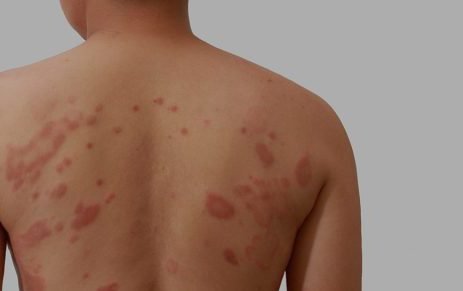Seborrhoeic Dermtitis
Seborrhoeic dermatitis, also known as seborrhoeic eczema, causes inflamed, flaky or scaly patches of skin that are often itchy. While the condition can potentially occur anywhere, it’s most often seen on the scalp, face and chest. Get in touch today to find out how the team at The Dermatology Clinic can help.

About seborrhoeic dermatitis
Seborrhoeic dermatitis affects around 4% of the UK population, and can be distressing and uncomfortable to live with, but there’s lots that can be done to help manage it.
Seborrhoeic dermatitis is most common in men and can occur at any age after puberty. However, babies can also experience a short-lived type of seborrhoeic dermatitis in the nappy area and on the scalp (this is known as cradle cap). This usually resolves within a few months.
It occurs on sebaceous (greasy) skin zones, such as:
The scalp: this can be light, flaky skin (known as dandruff) or more severe, red and sometimes bleeding rashes
The face: most commonly around the cheeks and nose, but the eyebrows can also be affected
Between the shoulder blades and on the central chest: here seborrhoeic dermatitis presents itself as round, well-defined pink or red patches of mild scaling on the skin
In the skin folds: seborrhoeic dermatitis can affect moist areas, for the underarms or the central chest. It appears as shiny, pink skin with cracks on the surface
Seborrhoeic dermatitis is not related to diet and occurs more commonly in cold weather than warm. On darker skin, areas affected can appear lighter or darker than the surrounding skin.
Symptoms of seborrhoeic dermatitis
Symptoms include sore, itchy, inflamed areas of skin that are often flaky and sensitive. Although some people experience the rash without feeling troubled, it can sometimes be both uncomfortable and embarrassing. We at The Dermatology Clinic understand this and are here to make sure your seborrhoeic dermatitis no longer puts a burden on your life.
Causes of seborrhoeic dermatitis
This type of dermatitis is thought to be caused by the over-growth of a yeast called Malassezia, which lives on the skin and is harmless. It could also be triggered by an overreaction to this yeast by the skin’s immune system. Malassezia is different to the yeasts that cause thrush and those found in foods.
Treating seborrhoeic dermatitis
Our team of professional dermatologists at The Dermatology Clinic are qualified to provide a variety of excellent treatments to manage your seborrhoeic dermatitis and soothe its symptoms. There is no definitive cure for seborrhoeic dermatitis but generally it can be well controlled using the correct creams.
The treatment we prescribe for you will depend on where on your body the seborrhoeic dermatitis has occurred, as well as the level of irritation.
Treatment for the scalp
If you have seborrhoeic dermatitis on your scalp, our expert dermatologists may prescribe medicated anti-dandruff shampoos. These contain agents such as ketoconazole, selenium sulphide and zinc pyrithione and are safe for regular use. For thicker scale, we can provide a descaling preparation. This contains salicylic acid and coconut oil and is applied for a few hours before shampooing, or overnight. If your scalp is very irritated, our consultants can provide a steroid scalp gel, lotion or shampoo to be used occasionally.
At The Dermatology Clinic, our team is expertly qualified to prescribe the most appropriate treatment for your individual condition. If your rash hasn’t responded to any other treatments, we may prescribe anti-yeast medication to be taken orally.




